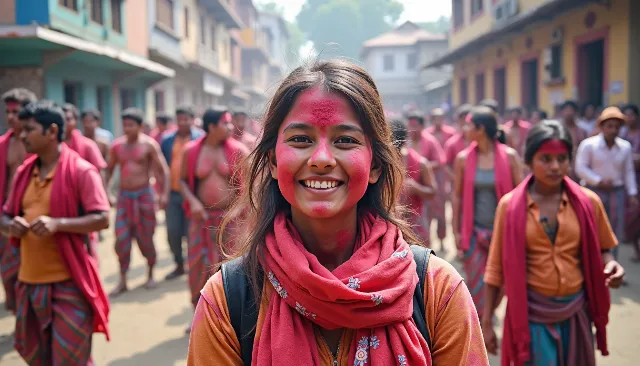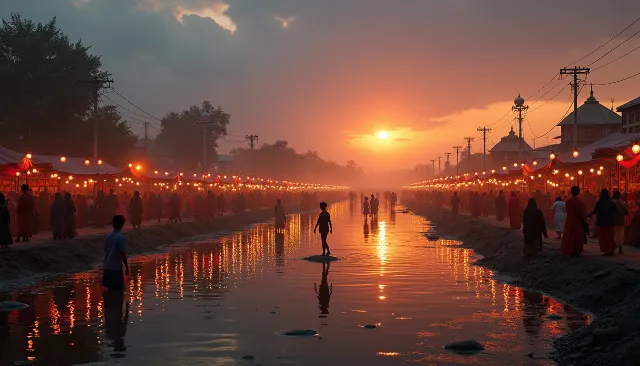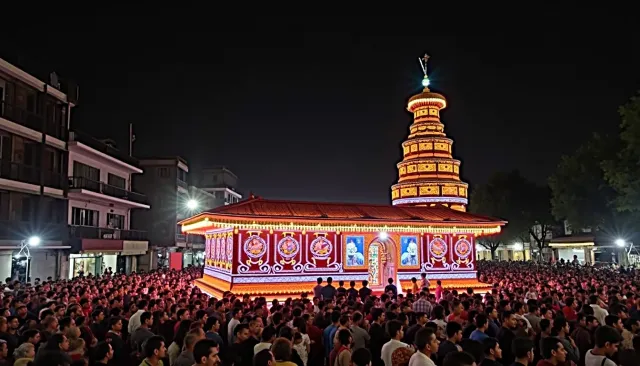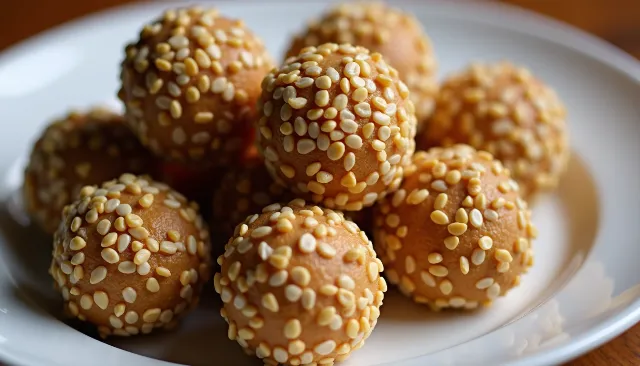1. Introduction to Holi in Nepal
Every year when the weather starts to warm up and the flowers begin to bloom in Nepal, a very colorful and joyful festival arrives — called Holi. In Nepal, people from many different languages, cultures and regions come together to celebrate this day with bright powders, water, music and laughter. This festival is not just about fun—it brings families, friends and neighbours together in a spirit of kindness and play.
In the hills and valleys, in big cities like Kathmandu and in quiet villages, Holi becomes a moment to set aside worries and enjoy colourful moments. In 2025, for example, the hilly regions celebrated on March 13 and the plains (Terai) the next day.
Holi in Nepal is also a time when people forgive past misunderstandings, share sweets and treat others like friends. It shows how colours can bring us closer, no matter our age or background. In a way, Holi becomes a large playground of joy, where everyone is invited and everyone can shine.

2. The History and Significance of Holi
The festival of Holi has roots in old stories and traditions. One popular myth tells of a brave boy named Prahlada who worshipped goodness and truth, and his evil uncle tried to harm him. But because truth was strong, good won in the end. This story reminds people that good things will always win over bad ones.
Another lovely part of the story involves the playful times of the god Krishna with his friend Radha. He once coloured her face to make a fun memory, and that tradition grew into the colourful face‑smearing we see today.
Beyond the stories, Holi signifies the arrival of spring, fresh starts and new friendships. In 2025, when people gathered in Nepal to burn the bonfire of Holika and then splash colours the next day, they were also celebrating trust, unity and joy.
3. When is Holi Celebrated in Nepal?
In Nepal, the date of Holi changes every year because it follows the lunar calendar. For example in 2025, people in the hilly areas celebrated Holi on March 13, and people in the Terai plains celebrated on March 14.
The festival usually happens around the full moon day of the month called Falgun in the Hindu calendar. That means it often falls sometime in February or March in the regular (Gregorian) calendar.
Because different regions and communities can have slightly different traditions, it’s good to check local calendars or ask neighbours when the celebration will begin. That way families can plan for the bonfire night (Holika Dahan) and the big colour‑day that follows.
4. Preparations for Holi Festivities
In the days before Holi arrives, families in Nepal begin to get ready. They buy colourful powders (gulal), water balloons, and sometimes water‑guns. They also clean their homes and make space for children and neighbours to play outside. The air starts feeling cheerful as street‑vendors set up stalls of snacks, sweets and colour packets.
One key preparation is the night before the main colour‑day: the community gathers around a bonfire to burn a symbolic figure called Holika. This ceremony shows how good defeats bad and old grievances can be left behind. In 2025, many places held such events with songs and dances.
Parents also talk to children about safety: wearing old clothes (since colours may stain), protecting the eyes and skin, and playing gently without hurting others. Some celebrations now use natural colours and less water to make the event friendlier for the environment and for everyone.
5. Traditional Colors and Their Meanings
Holi is famous for its bright and cheerful colors. In Nepal, people use powders called gulal in red, yellow, green, blue, and pink. Each color has a special meaning. Red often shows love and energy, yellow is for happiness, green for nature and growth, and blue for calmness.
Children and adults enjoy applying these colors on each other’s faces and clothes. It is a way to express joy, friendship, and fun without using words. People also throw colored water using balloons and small water guns called pichkari.
In recent years, many communities have started using eco-friendly and natural colors made from flowers and turmeric. This change keeps the celebration safe for skin, hair, and the environment. Festivals across Kathmandu and Pokhara are now filled with these colorful and safe powders, making Holi a bright, happy, and healthy celebration.
6. The Ritual of Holika Dahan
The night before the main color festival is called Holika Dahan. People gather to light a bonfire that symbolizes the victory of good over evil. This ritual comes from the story of Prahlada and Holika, teaching lessons of bravery and faith.
Communities gather around the fire singing songs and sometimes dancing. They offer small items like grains or rice to the fire as a way of saying goodbye to negativity and welcoming new happiness. Families often dress in their best clothes and enjoy the warmth and excitement of the night.
After Holika Dahan, people feel a sense of freshness and joy. The next day, they celebrate by playing with colors, knowing that negativity is left behind in the fire. In 2025, many Nepali towns had large bonfires, bringing communities together for a night of fun and meaning.
7. Celebrating Holi in Kathmandu
Kathmandu, the capital city of Nepal, is one of the most colorful places during Holi. Streets, parks, and open spaces are filled with children, adults, and tourists playing with colors. Vendors sell powders, sweets, and water balloons, making the city lively and festive.
Local temples and squares host special cultural programs, including songs, traditional dances, and even short plays about Holi’s history. People from different backgrounds join together, showing the unity and diversity of the city.
Holi in Kathmandu also attracts visitors from around Nepal and abroad. They experience not just colors, but also Nepali culture, foods like gujiya and puran poli, and the joyous atmosphere of everyone laughing, singing, and dancing together.
8. Holi Traditions in Other Nepali Cities
While Kathmandu has a big celebration, other cities like Pokhara, Bhaktapur, and Lalitpur have their own special traditions. In Pokhara, Holi is often celebrated near lakes and gardens, where children play with water balloons and colorful powders.
In Bhaktapur, traditional music and dance accompany the festivities, and people enjoy unique local foods. The city’s heritage streets become a playground of colors, attracting both locals and tourists.
Lalitpur blends modern celebrations with traditional rituals. Families gather for Holika Dahan and then celebrate with water fights and singing. Across Nepal, even smaller towns and villages have lively Holi events that bring people together, proving that the festival is enjoyed everywhere, big or small.
9. Holi in Rural Nepal: Unique Customs
In rural parts of Nepal, Holi is celebrated with special local customs. Villagers gather in open fields, courtyards, and near rivers to play with colors. The celebrations often feel more personal and connected to nature. Children run around with colorful powders, and adults join in with songs and traditional dances.
Some villages have unique customs like singing local folk songs, carrying small processions with musical instruments, and visiting neighbors to exchange sweets. People may also decorate their homes with flowers and colorful powders to mark the festival.
These rural celebrations show the strong sense of community. Everyone, from young children to grandparents, participates with joy. In 2025, several rural districts organized safe and eco-friendly Holi events, using natural colors made from flowers, turmeric, and rice powders, making the festival fun while respecting the environment.
10. Foods and Sweets Special to Holi
Holi is not just about colors; it is also about delicious foods. In Nepal, families prepare special sweets like gujiya, malpuas, and peda to enjoy during the festival. These treats are often shared with friends and neighbors.
Other common Holi foods include dahi bhat, spicy snacks, and fried goodies that children love. Some communities also make colorful drinks using natural ingredients, making the festival visually exciting as well as tasty.
Eating together strengthens friendships and family bonds. In 2025, people in Kathmandu, Pokhara, and other cities enjoyed these foods while celebrating with colors. Sharing food during Holi is a reminder of love, community, and the happiness that comes from simple traditions.
11. Music, Dance, and Cultural Performances
Music and dance are at the heart of Holi celebrations in Nepal. People sing traditional songs, play drums and other instruments, and dance in groups. These performances add energy and joy to the colorful festival.
In cities like Kathmandu and Lalitpur, cultural programs are organized in public squares. Folk dances, street performances, and even small plays about Holi’s history entertain children and adults alike. Tourists also join in, learning the dances and songs.
Music during Holi helps everyone express happiness and energy. In rural areas, villagers often gather around fires, singing local songs while applying colors. In 2025, Nepali communities embraced both traditional and modern music, blending cultural heritage with contemporary fun.
12. Holi Games and Playful Traditions
Playing games is a big part of Holi. Children and adults use water balloons, water guns, and powdered colors to playfully splash one another. These games are full of laughter and excitement.
Some towns organize special Holi contests, like tug-of-war, group dances, or color-themed races. Families and friends often compete for fun prizes or just enjoy the thrill of being together.
These playful traditions help strengthen social bonds. Everyone forgets worries and enjoys the moment. In 2025, communities encouraged safe play by using natural colors and ensuring children were protected, making Holi fun and memorable for everyone.
13. Holi for Kids: Family-Friendly Activities
Holi is especially fun for children. Kids enjoy throwing colored powders, filling water balloons, and running around with friends and family. Parents often join in, making it a full-family event.
Many communities organize safe, family-friendly zones where children can play without worry. There are special games, puppet shows, and storytelling sessions about the history and significance of Holi.
These activities teach children about friendship, kindness, and cultural traditions. In 2025, schools and local organizations in cities like Kathmandu and Pokhara hosted Holi events specifically for kids, encouraging creativity, teamwork, and safe play while celebrating the festival of colors.
14. Eco-Friendly and Natural Colors Trend
In recent years, Nepal has seen a big move toward eco-friendly Holi celebrations. Traditional chemical-based colors can harm the skin, hair, and environment, so many families now choose natural powders made from flowers, turmeric, and herbs.
These natural colors are safe, gentle, and biodegradable. Communities encourage everyone to use water wisely, avoiding wastage during water games. Some towns even host “green Holi” festivals, promoting cleanliness and environmental care.
The trend also teaches children the importance of protecting nature. In 2025, many Nepali cities and villages actively promoted eco-friendly Holi, making the festival not only fun but also responsible. Celebrating with natural colors ensures that Holi remains bright, joyful, and safe for everyone.
15. The Role of Tourism in Holi Celebrations
Holi attracts tourists from around the world to Nepal. Visitors come to enjoy the colorful celebrations, local music, dances, and traditional foods. Cities like Kathmandu, Pokhara, and Bhaktapur become lively hubs for cultural exchange.
Hotels and guesthouses offer special packages, including guided tours, Holi events, and cultural workshops. Tourists get to experience traditional customs like Holika Dahan and learn about the festival’s history and significance.
Tourism helps local communities as well. Street vendors, artisans, and performers benefit from the festival, while visitors take back memories of Nepalese culture. In 2025, tourism played an important role in spreading the joy and unity of Holi across the country.
16. Famous Holi Events and Festivals in Nepal
Several cities in Nepal host famous Holi events that attract large crowds. Kathmandu Durbar Square and Pokhara’s lakeside are popular spots where people gather to celebrate together.
Some events feature live music, dance performances, and competitions with colored powders and water balloons. In Bhaktapur, traditional cultural programs show local folk dances and music that are hundreds of years old.
In 2025, these festivals also included eco-friendly activities, workshops for children, and guided cultural experiences. Such events make Holi not just a fun celebration but a way to learn about Nepal’s rich traditions while enjoying colors, music, and friendship.
17. Holi Safety Tips and Guidelines
Holi is full of fun, but safety is very important. Children and adults should wear old clothes that can get stained. It’s a good idea to protect the eyes with glasses and keep the skin moisturized to avoid irritation from colors.
When playing with water balloons or water guns, people should avoid throwing them at strangers or in dangerous places. Using natural and eco-friendly colors also keeps everyone safe and healthy. Communities in 2025 emphasized these safety tips during celebrations across Nepal.
Parents and organizers remind children to play gently and respectfully. They also advise cleaning up after playing to avoid slipping or accidents. Following these simple safety rules ensures that Holi is enjoyable and carefree for everyone.
18. The Spiritual Side of Holi
Holi is not only about colors and fun; it has a spiritual meaning too. It reminds people of the victory of good over evil, as told in the story of Prahlada and Holika.
Many families visit temples before or during Holi to offer prayers and blessings. They light lamps, chant songs, and share sweets as a way to start fresh and leave behind negativity.
Celebrating Holi spiritually helps people focus on love, forgiveness, and unity. In 2025, many Nepali communities combined colorful celebrations with prayers, showing that Holi can be joyful and meaningful at the same time.
19. Holi Memories: Stories and Experiences
Holi creates memories that people remember for a lifetime. Children love telling stories about the colors they threw, the water balloons they dodged, and the fun games they played with friends.
Families share special moments, like cooking sweets together, dancing to traditional songs, or gathering around the Holika Dahan bonfire. Visitors and tourists often post pictures and videos, spreading the joy of Nepalese Holi worldwide.
In 2025, people in cities and villages shared their Holi experiences on social media, showing how this festival brings smiles, laughter, and unforgettable memories to everyone, young and old.
20. Conclusion: Holi as a Symbol of Unity and Joy
Holi is more than just a festival of colors—it is a celebration of life, friendship, and togetherness. People of all ages come together, forget differences, and share happiness.
In Nepal, Holi brings communities closer, strengthens family bonds, and welcomes spring with joy and energy. Whether in bustling cities or quiet villages, the spirit of Holi is the same: love, laughter, and playfulness.
The festival reminds everyone to forgive, share, and enjoy life. In 2025, Holi in Nepal once again proved that colors are not just for fun—they are a symbol of unity, peace, and happiness for everyone.






